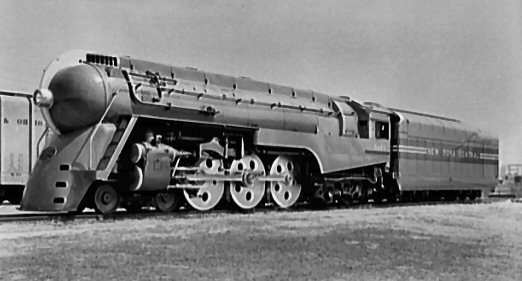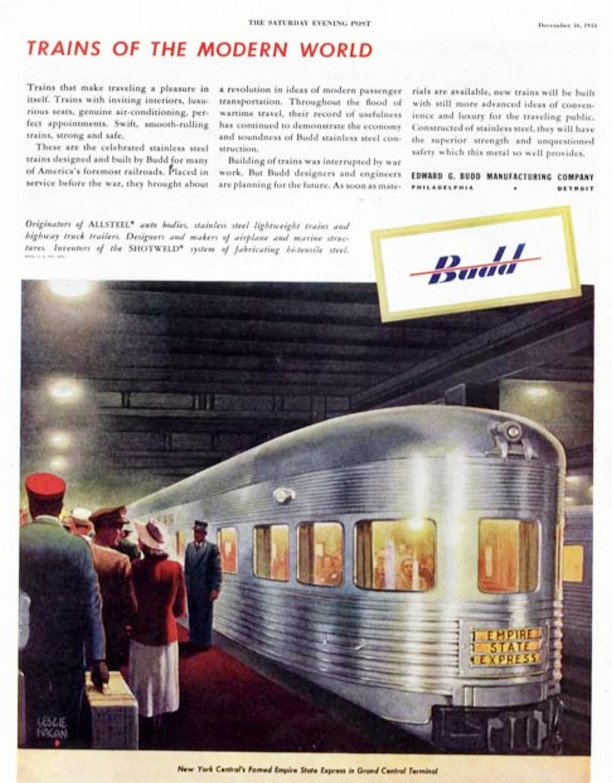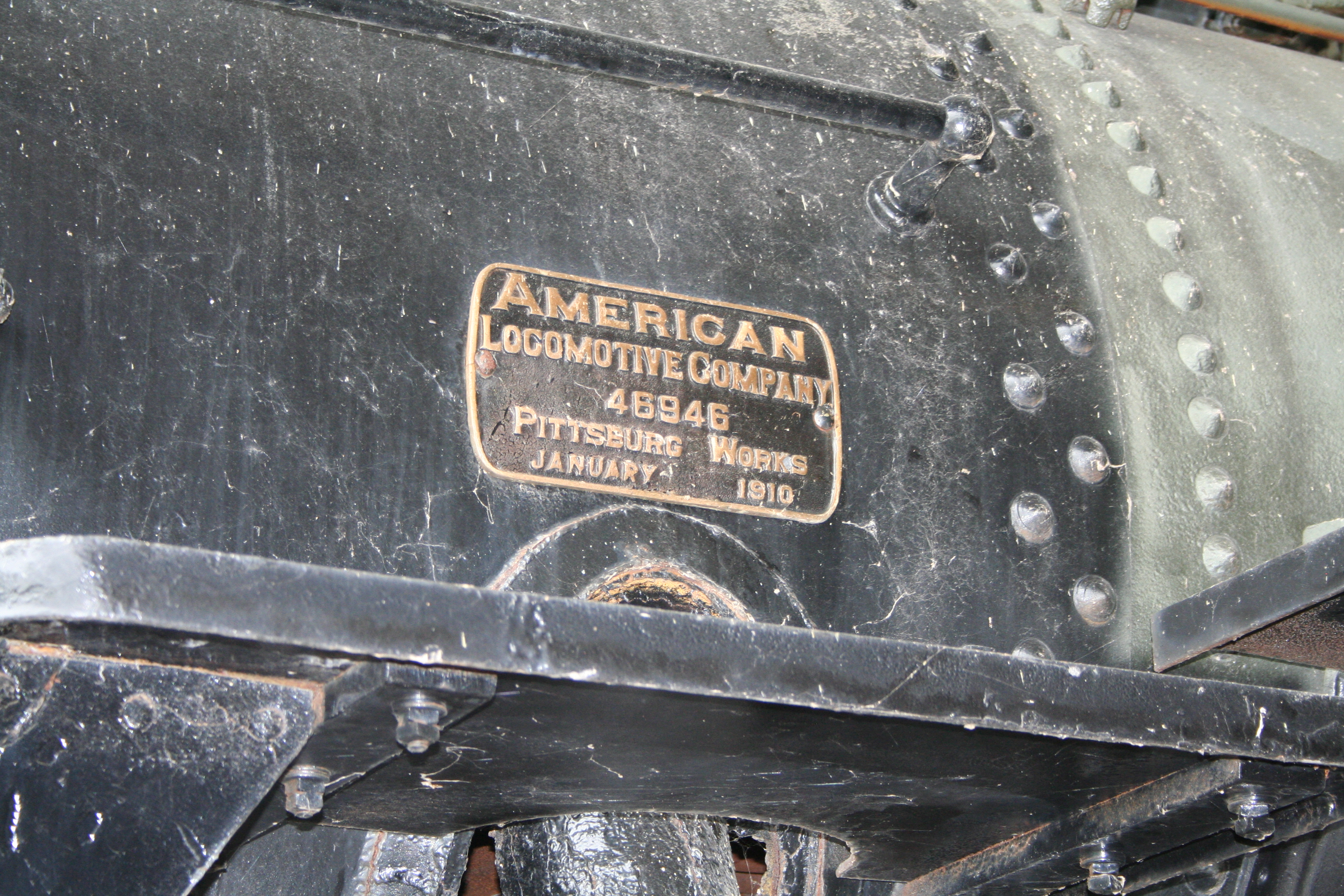|
New York Central Hudson
A New York Central Hudson was a popular 4-6-4 " Hudson" type steam locomotive built by the American Locomotive Company (ALCO) and the Lima Locomotive Works in three series from 1927 to 1938 for the New York Central Railroad. Named after the Hudson River, the 4-6-4 wheel arrangement came to be known as the "Hudson" type in the United States, as these locomotives were the first examples built and used in North America. Built for high-speed passenger train work, the Hudson locomotives were famously known for hauling the New York Central's crack passenger trains, such as the ''20th Century Limited'' and the ''Empire State Express''. With the onset of diesel locomotives by the mid-20th Century, all Hudson locomotives were retired and subsequently scrapped by 1957, with none preserved today except for a converted tender from J-1d 5313, which is preserved at the Steamtown National Historic Site in Scranton, Pennsylvania. History The Chicago, Milwaukee, St. Paul & Pacific Railroad (M ... [...More Info...] [...Related Items...] OR: [Wikipedia] [Google] [Baidu] |
American Locomotive Company
The American Locomotive Company (often shortened to ALCO, ALCo or Alco) was an American manufacturer of locomotives, diesel generators, steel, and tanks that operated from 1901 to 1969. The company was formed by the merger of seven smaller locomotive manufacturers and Schenectady Locomotive Engine Manufactory of Schenectady, New York. A subsidiary, American Locomotive Automobile Company, designed and manufactured automobiles under the Alco brand from 1905 to 1913. ALCO also produced nuclear reactors from 1954 to 1962. The company changed its name to Alco Products, Incorporated in 1955. In 1964, the Worthington Corporation acquired the company. The company went out of business in 1969. The ALCO name is currently being used by Fairbanks Morse Engine for their FM, ALCO line. Foundation and early history The company was created in 1901 from the merger of seven smaller locomotive manufacturers with Schenectady Locomotive Engine Manufactory of Schenectady, New York: *Brooks Locomot ... [...More Info...] [...Related Items...] OR: [Wikipedia] [Google] [Baidu] |
Empire State Express
The ''Empire State Express'' was one of the named passenger trains and onetime flagship of the New York Central & Hudson River Railroad (a predecessor of the later New York Central Railroad). On September 14, 1891, it covered the 436 miles (702 kilometers) between New York City and Buffalo in 7 hours and 6 minutes (including stops), averaging 61.4 miles-per-hour (98.8 km/h), with a top speed of 82 mph (132 km/h). History The train soon gained worldwide acclaim, and its route would later stretch to 620 miles (998 kilometers), to Cleveland, Ohio. The ''Empire State'' was the first passenger train with a schedule speed of over 52 mph and the first to make runs of 142.88 miles (230 km) between stops (between New York City and Albany: the longest scheduled nonstop run until then). The 1893 Guide shows an 8 hr 40 min schedule for 440 miles New York to Buffalo. As early as the 1930s the train served as a connector train f ... [...More Info...] [...Related Items...] OR: [Wikipedia] [Google] [Baidu] |
Alco
The American Locomotive Company (often shortened to ALCO, ALCo or Alco) was an American manufacturer of locomotives, diesel generators, steel, and tanks that operated from 1901 to 1969. The company was formed by the merger of seven smaller locomotive manufacturers and Schenectady Locomotive Engine Manufactory of Schenectady, New York. A subsidiary, American Locomotive Automobile Company, designed and manufactured automobiles under the Alco brand from 1905 to 1913. ALCO also produced nuclear reactors from 1954 to 1962. The company changed its name to Alco Products, Incorporated in 1955. In 1964, the Worthington Corporation acquired the company. The company went out of business in 1969. The ALCO name is currently being used by Fairbanks Morse Engine for their FM, ALCO line. Foundation and early history The company was created in 1901 from the merger of seven smaller locomotive manufacturers with Schenectady Locomotive Engine Manufactory of Schenectady, New York: * Brooks Loc ... [...More Info...] [...Related Items...] OR: [Wikipedia] [Google] [Baidu] |
NY Worlds' Fair Streamlined Hudson LC-G613-T01-35339 DLC
NY most commonly refers to: * New York (state), a state in the Northeastern United States * New York City, the most populous city in the United States, located in the state of New York NY, Ny or ny may also refer to: Places * North Yorkshire, an English county * Ny, Belgium, a village * Old number plate of German small town Niesky People * Eric Ny (1909–1945), Swedish runner * Marianne Ny, Swedish prosecutor Letters * ny (digraph), an alphabetic letter * Nu (letter), the 13th letter of the Greek alphabet, transcribed as "Ny" * ñ (énye), sometimes transcribed as "ny" Other uses * New Year * Air Iceland (IATA code: NY) * Chewa language (ISO 639-1 code: ny) See also * New Year (other) * New York (other) * NYC (other) * NYS (other) NYS may refer to: * New York Skyports Seaplane Base (IATA: NYS) * National Youth Service, of several countries * New York State * New York Shipbuilding, a corporation * Nyungar language Noongar ( ... [...More Info...] [...Related Items...] OR: [Wikipedia] [Google] [Baidu] |
Firebox (steam Engine)
In a steam engine, the firebox is the area where the fuel is burned, producing heat to boil the water in the boiler. Most are somewhat box-shaped, hence the name. The hot gases generated in the firebox are pulled through a rack of tubes running through the boiler. Steam locomotive fire tube firebox In the standard steam locomotive fire-tube boiler, the firebox is surrounded by water space on five sides. The bottom of the firebox is open to atmospheric pressure, but covered by fire grates (solid fuel) or a firing pan (liquid fuel). If the engine burns solid fuel, like wood or coal, there is a grate covering most of the bottom of the firebox to hold the fire. An ashpan, mounted underneath the firebox and below the grates, catches and collects hot embers, ashes, and other solid combustion waste as it falls through the grates. In a coal-burning locomotive, the grates may be shaken to clean dead ash from the bottom of the fire. They are shaken either manually or (in larger locomotiv ... [...More Info...] [...Related Items...] OR: [Wikipedia] [Google] [Baidu] |
Trailing Truck
On a steam locomotive, a trailing wheel or trailing axle is generally an unpowered wheel or axle ( wheelset) located behind the driving wheels. The axle of the trailing wheels is usually located in a trailing truck. On some large locomotives, a booster engine was mounted on the trailing truck to provide extra tractive effort when starting a heavy train and at low speeds on gradients. Trailing wheels were used in some early locomotives but fell out of favor for a time during the latter 19th century. As demand for more powerful locomotives increased, trailing wheels began to be used to support the crew cab and rear firebox area. Trailing wheels first appeared on American locomotives between 1890 and 1895, but their axle worked in rigid pedestals. It enabled boilers to be lowered, since the top of the main frames was dropped down behind the driving wheels and under the firebox. The firebox could also be longer and wider, increasing the heating surface area and steam generation ... [...More Info...] [...Related Items...] OR: [Wikipedia] [Google] [Baidu] |
2-8-4
Under the Whyte notation, a 2-8-4 is a steam locomotive that has two unpowered leading wheels, followed by eight coupled and powered driving wheels, and four trailing wheels. This locomotive type is most often referred to as a Berkshire, though the Chesapeake and Ohio Railway used the name Kanawha for their 2-8-4s. In Europe, this wheel arrangement was mostly seen in mainline passenger express locomotives and, in certain countries, in tank locomotives. Overview In the United States of America, the 2-8-4 wheel arrangement was a further development of the enormously successful 2-8-2 Mikado. It resulted from the requirement for a freight locomotive with even greater steam heating capacity. To produce more steam, a solution was to increase the size of the locomotive's firebox, though the 2-8-2 wheel arrangement, with its single axle trailing truck, limited the permissible increased axle loading from a larger firebox. The most practical solution was to add a second trailing axle to ... [...More Info...] [...Related Items...] OR: [Wikipedia] [Google] [Baidu] |
Axle Load
An axle or axletree is a central shaft for a rotating wheel or gear. On wheeled vehicles, the axle may be fixed to the wheels, rotating with them, or fixed to the vehicle, with the wheels rotating around the axle. In the former case, bearings or bushings are provided at the mounting points where the axle is supported. In the latter case, a bearing or bushing sits inside a central hole in the wheel to allow the wheel or gear to rotate around the axle. Sometimes, especially on bicycles, the latter type axle is referred to as a '' spindle''. Terminology On cars and trucks, several senses of the word ''axle'' occur in casual usage, referring to the shaft itself, its housing, or simply any transverse pair of wheels. Strictly speaking, a shaft which rotates with the wheel, being either bolted or splined in fixed relation to it, is called an ''axle'' or ''axle shaft''. However, in looser usage, an entire assembly including the surrounding axle housing (typically a casting) is ... [...More Info...] [...Related Items...] OR: [Wikipedia] [Google] [Baidu] |
4-6-2
Under the Whyte notation for the classification of steam locomotives, represents the wheel arrangement of four leading wheels on two axles, six powered and coupled driving wheels on three axles and two trailing wheels on one axle. The locomotive became almost globally known as a Pacific type. Overview The introduction of the design in 1901 has been described as "a veritable milestone in locomotive progress". On many railways worldwide, Pacific steam locomotives provided the motive power for express passenger trains throughout much of the early to mid-20th century, before either being superseded by larger types in the late 1940s and 1950s, or replaced by electric or diesel-electric locomotives during the 1950s and 1960s. Nevertheless, new Pacific designs continued to be built until the mid-1950s. The type is generally considered to be an enlargement of the Atlantic type, although its prototype had a direct relationship to the Ten-wheeler and Prairie, effectively ... [...More Info...] [...Related Items...] OR: [Wikipedia] [Google] [Baidu] |
New York Central 4-6-4 Hudson Locomotive, 5249 (CJ Allen, Steel Highway, 1928)
New is an adjective referring to something recently made, discovered, or created. New or NEW may refer to: Music * New, singer of K-pop group The Boyz Albums and EPs * ''New'' (album), by Paul McCartney, 2013 * ''New'' (EP), by Regurgitator, 1995 Songs * "New" (Daya song), 2017 * "New" (Paul McCartney song), 2013 * "New" (No Doubt song), 1999 *"new", by Loona from '' Yves'', 2017 *"The New", by Interpol from ''Turn On the Bright Lights'', 2002 Acronyms * Net economic welfare, a proposed macroeconomic indicator * Net explosive weight, also known as net explosive quantity * Network of enlightened Women, a conservative university women's organization * Next Entertainment World, a South Korean film distribution company Identification codes * Nepal Bhasa language ISO 639 language code * New Century Financial Corporation (NYSE stock abbreviation) * Northeast Wrestling, a professional wrestling promotion in the northeastern United States Transport * New Orleans Lakefront Airp ... [...More Info...] [...Related Items...] OR: [Wikipedia] [Google] [Baidu] |
Hudson Valley
The Hudson Valley (also known as the Hudson River Valley) comprises the valley of the Hudson River and its adjacent communities in the U.S. state of New York. The region stretches from the Capital District including Albany and Troy south to Yonkers in Westchester County, bordering New York City. History Pre-Columbian era The Hudson Valley was inhabited by indigenous peoples ages before Europeans arrived. The Lenape, Wappinger, and Mahican branches of the Algonquins lived along the river, mostly in peace with the other groups. The lower Hudson River was inhabited by the Lenape, The Lenape people waited for the explorer Giovanni da Verrazzano onshore, traded with Henry Hudson, and sold the island of Manhattan. Further north, the Wappingers lived from Manhattan Island up to Poughkeepsie. They lived a similar lifestyle to the Lenape, residing in various villages along the river. They traded with both the Lenape to the south and the Mahicans to the north. The Mahicans lived ... [...More Info...] [...Related Items...] OR: [Wikipedia] [Google] [Baidu] |
New York Central
The New York Central Railroad was a railroad primarily operating in the Great Lakes and Mid-Atlantic regions of the United States. The railroad primarily connected greater New York and Boston in the east with Chicago and St. Louis in the Midwest, along with the intermediate cities of Albany, Buffalo, Cleveland, Cincinnati, Detroit, Rochester and Syracuse. New York Central was headquartered in New York City's New York Central Building, adjacent to its largest station, Grand Central Terminal. The railroad was established in 1853, consolidating several existing railroad companies. In 1968, the NYC merged with its former rival, the Pennsylvania Railroad, to form Penn Central. Penn Central went bankrupt in 1970 and merged into Conrail in 1976. Conrail was broken-up in 1999, and portions of its system were transferred to CSX and Norfolk Southern Railway, with CSX acquiring most of the old New York Central trackage. Extensive trackage existed in the states of New York, Pennsyl ... [...More Info...] [...Related Items...] OR: [Wikipedia] [Google] [Baidu] |








.jpg)
.jpg)